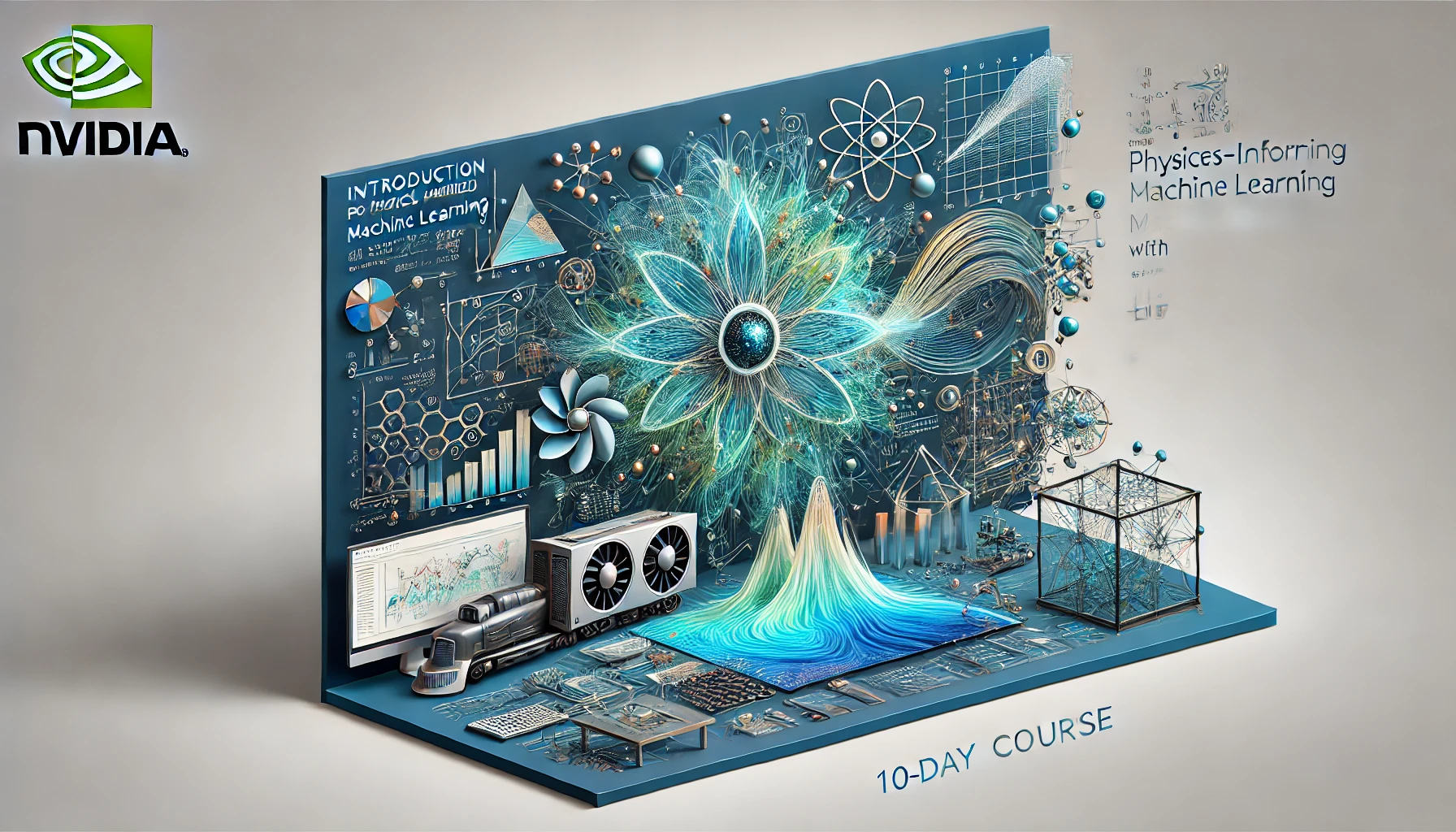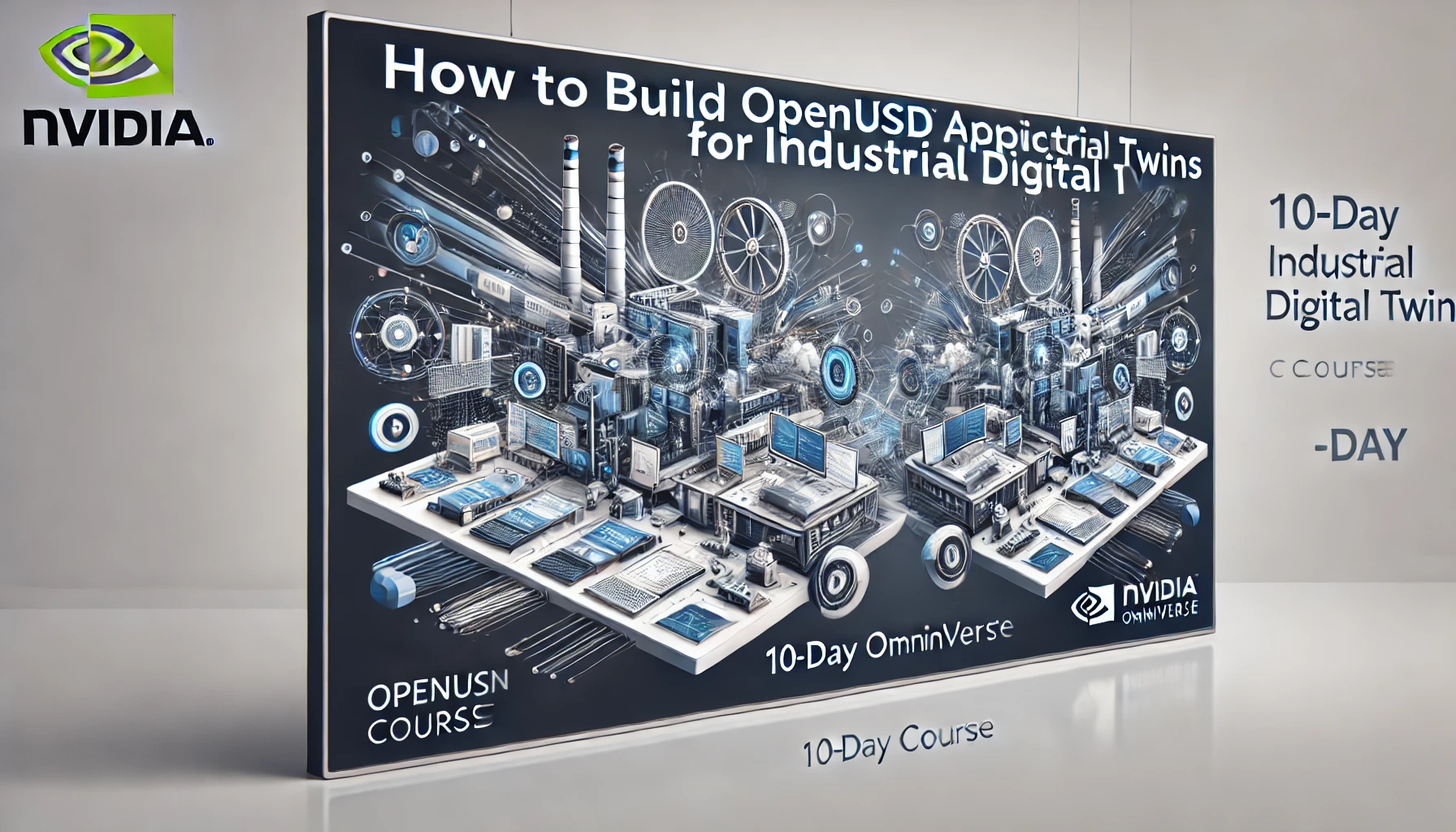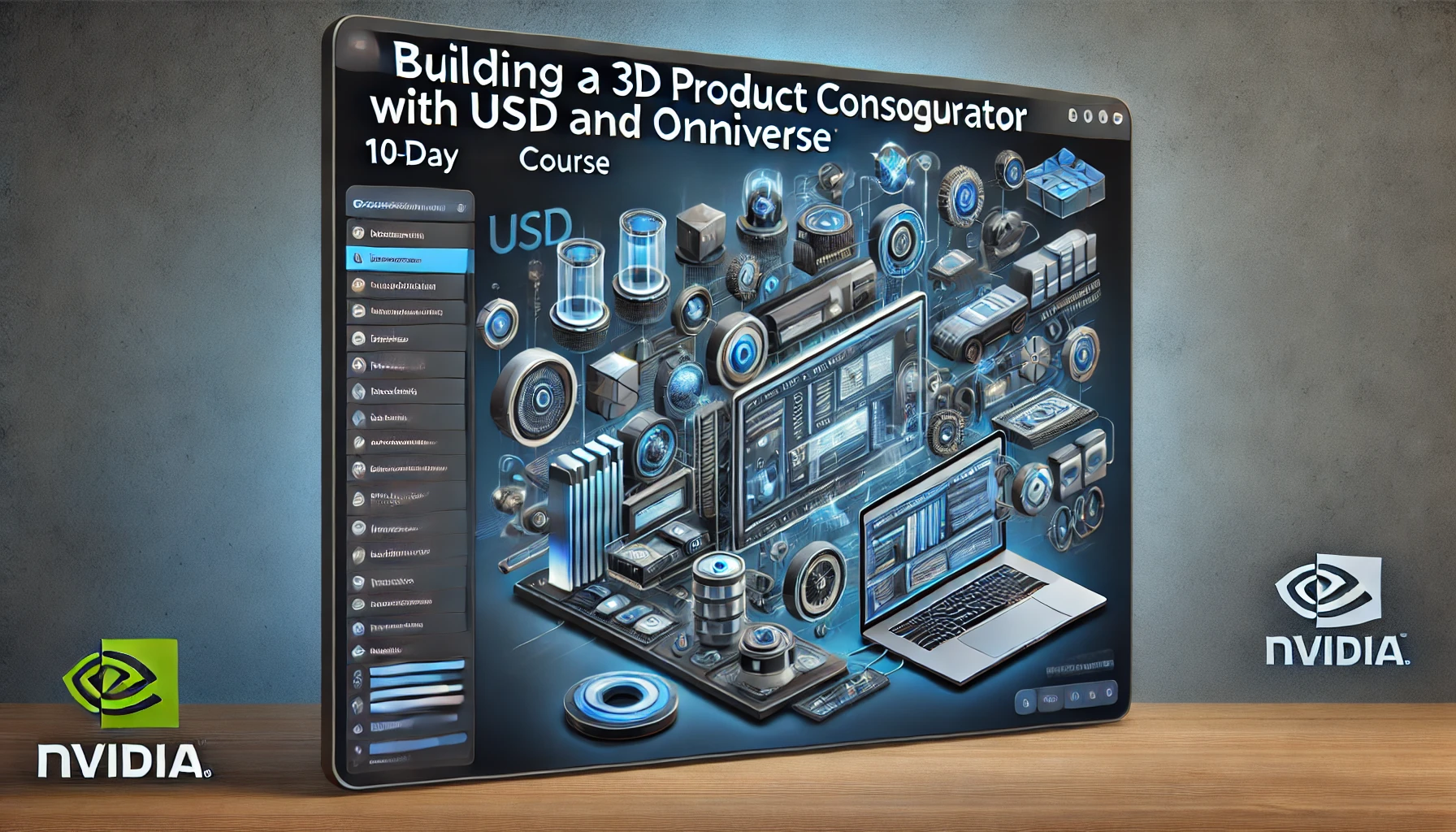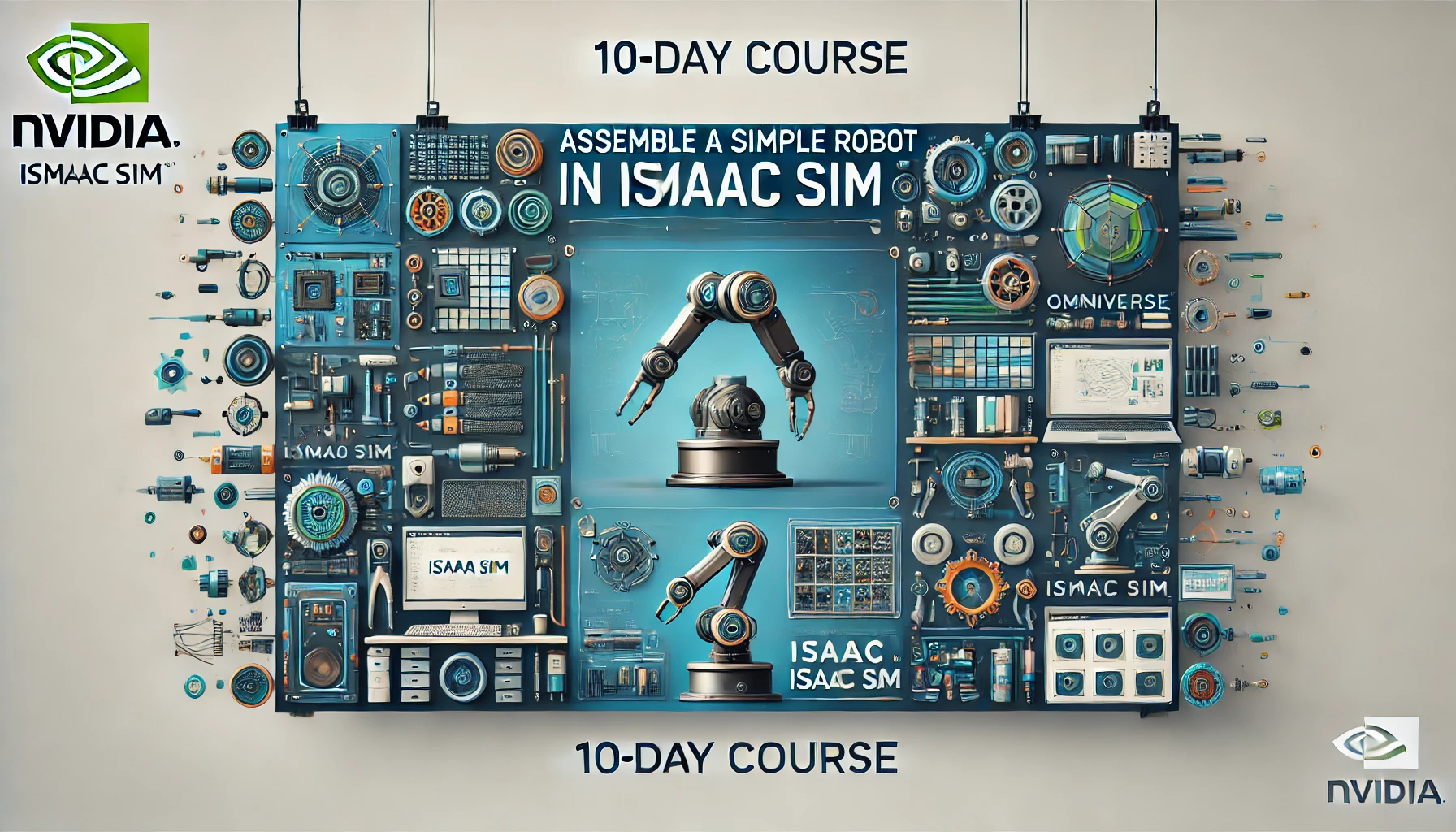Introduction to Physics-informed Machine Learning with Modulus
1. About the Course
“Introduction to Physics-informed Machine Learning with Modulus” is a comprehensive 10-day course designed to introduce developers, data scientists, and engineers to NVIDIA Modulus, a powerful framework for building physics-informed machine learning (PIML) models. Physics-informed machine learning combines traditional data-driven approaches with physical laws and principles, enabling the creation of models that are both accurate and physically consistent.
This course provides a step-by-step guide to understanding and using Modulus, from the basics of setting up the environment to developing complex PIML models. Participants will learn how to incorporate physics-based constraints into their machine learning models, leverage NVIDIA’s powerful GPUs for training, and apply these models to real-world problems. By the end of the course, participants will have a solid foundation in physics-informed machine learning and be equipped with the skills to develop, train, and deploy PIML models using Modulus.
2. Learning Objectives
By the end of this course, participants will be able to:
- Understand the fundamentals of physics-informed machine learning: Grasp the core concepts of PIML and how it differs from traditional machine learning approaches.
- Set up the NVIDIA Modulus environment: Install and configure the necessary tools and libraries to work with Modulus.
- Develop physics-informed machine learning models: Build PIML models that incorporate physical laws and constraints into the learning process.
- Train and optimize PIML models on NVIDIA GPUs: Utilize NVIDIA GPUs to accelerate the training of physics-informed models, optimizing for performance and accuracy.
- Apply PIML models to real-world problems: Use Modulus to solve complex problems in areas such as fluid dynamics, structural analysis, and more.
- Deploy and validate PIML models: Learn how to deploy PIML models in practical applications and validate their performance against real-world data.
3. Course Prerequisites
This course is designed for participants with a background in machine learning and an interest in physics-based modeling. The prerequisites include:
- Basic Knowledge of Machine Learning: Familiarity with fundamental machine learning concepts, including supervised learning, neural networks, and model training.
- Understanding of Physics and Mathematics: A solid understanding of basic physics principles and mathematical concepts, such as differential equations and numerical methods.
- Experience with Python Programming: Proficiency in Python programming, as Modulus is built on top of Python and TensorFlow/PyTorch.
- Familiarity with Deep Learning Frameworks: Experience with deep learning frameworks like TensorFlow or PyTorch will be beneficial but not required.
4. Course Outlines
This course is structured to progressively build your expertise in physics-informed machine learning using NVIDIA Modulus. The content is organized as follows:
- Introduction to Physics-informed Machine Learning: Overview of PIML, its applications, and how Modulus fits into the landscape.
- Setting Up the Modulus Environment: Installation and configuration of NVIDIA Modulus and related tools.
- Understanding Physics-informed Neural Networks (PINNs): Introduction to PINNs, their structure, and how they incorporate physical laws.
- Building a Simple PIML Model: Hands-on experience in creating a basic physics-informed model using Modulus.
- Training PIML Models on NVIDIA GPUs: Techniques for training PIML models efficiently on NVIDIA GPUs.
- Optimizing Model Performance: Strategies for optimizing the performance of PIML models, including hyperparameter tuning and model validation.
- Applying PIML to Fluid Dynamics: Using Modulus to solve fluid dynamics problems with physics-informed machine learning.
- Advanced PIML Techniques: Exploring advanced techniques such as multi-physics modeling and transfer learning in PIML.
- Deploying and Validating PIML Models: Best practices for deploying PIML models in production and validating their accuracy.
- Capstone Project: A hands-on project that involves developing, training, and deploying a PIML model using NVIDIA Modulus.
5. Day-by-Day Breakdown
Day 1: Introduction to Physics-informed Machine Learning
- Objectives: Understand the basics of physics-informed machine learning and its applications.
- Topics:
- Overview of PIML and its advantages over traditional ML
- Key applications of PIML in various industries
- Introduction to NVIDIA Modulus and its role in PIML
- Activities:
- Reading materials on the fundamentals of PIML
- External link: NVIDIA Modulus Overview
- Internal link: Regent Studies Machine Learning Courses
Day 2: Setting Up the Modulus Environment
- Objectives: Install and configure the NVIDIA Modulus environment for PIML development.
- Topics:
- Installing Modulus on your system
- Setting up the development environment
- Navigating the Modulus interface and tools
- Activities:
- Step-by-step installation and configuration guide
- Verifying the setup with sample models
Day 3: Understanding Physics-informed Neural Networks (PINNs)
- Objectives: Learn about the structure and functionality of Physics-informed Neural Networks (PINNs).
- Topics:
- Introduction to PINNs and their architecture
- How PINNs incorporate physical laws into machine learning
- Differences between PINNs and traditional neural networks
- Activities:
- Exploring the architecture of existing PINN models
- Analyzing the role of physics-based constraints in PIML
Day 4: Building a Simple PIML Model
- Objectives: Build a basic physics-informed model using NVIDIA Modulus.
- Topics:
- Step-by-step guide to creating a simple PIML model
- Defining physical laws and constraints within the model
- Training the model on sample data
- Activities:
- Hands-on model building in Modulus
- Testing and evaluating the model’s performance
Day 5: Training PIML Models on NVIDIA GPUs
- Objectives: Learn how to train physics-informed models efficiently on NVIDIA GPUs.
- Topics:
- Leveraging GPU acceleration for model training
- Techniques for optimizing training time and performance
- Monitoring and analyzing training progress
- Activities:
- Training a PIML model on NVIDIA GPUs
- Comparing GPU and CPU training performance
Day 6: Optimizing Model Performance
- Objectives: Explore strategies for optimizing the performance of PIML models.
- Topics:
- Hyperparameter tuning in physics-informed models
- Techniques for improving model accuracy and stability
- Validating model performance with real-world data
- Activities:
- Implementing optimization strategies in a PIML model
- Analyzing the impact of different hyperparameters on performance
Day 7: Applying PIML to Fluid Dynamics
- Objectives: Apply physics-informed machine learning to solve fluid dynamics problems using Modulus.
- Topics:
- Introduction to fluid dynamics and its relevance to PIML
- Building and training a fluid dynamics model in Modulus
- Analyzing and interpreting simulation results
- Activities:
- Developing a PIML model for a fluid dynamics problem
- Testing the model’s accuracy and reliability
Day 8: Advanced PIML Techniques
- Objectives: Explore advanced techniques in physics-informed machine learning, such as multi-physics modeling and transfer learning.
- Topics:
- Multi-physics modeling with Modulus
- Using transfer learning to improve model performance
- Integrating PIML models with other simulation tools
- Activities:
- Implementing multi-physics modeling in a PIML project
- Experimenting with transfer learning in Modulus
Day 9: Deploying and Validating PIML Models
- Objectives: Learn best practices for deploying PIML models and validating their accuracy.
- Topics:
- Deploying PIML models in production environments
- Techniques for validating model performance against real-world data
- Best practices for maintaining and updating deployed models
- Activities:
- Deploying a PIML model in a simulated environment
- Validating the model’s performance with new data
Day 10: Capstone Project
- Objectives: Apply all the knowledge gained throughout the course to develop, train, and deploy a PIML model using NVIDIA Modulus.
- Topics:
- Project planning and design
- Building and training a complex PIML model
- Deploying and presenting the final project
- Activities:
- Work on a real-world project that involves developing and deploying a PIML model
- Present the project and discuss the results with peers
6. Learning Outcomes
By the end of “Introduction to Physics-informed Machine Learning with Modulus,” participants will be able to:
- Develop physics-informed machine learning models: Confidently build and train PIML models that incorporate physical laws and constraints.
- Optimize and train PIML models on NVIDIA GPUs: Utilize NVIDIA GPUs to accelerate the training of PIML models, optimizing for performance and accuracy.
- Apply PIML models to complex real-world problems: Use Modulus to solve challenging problems in fields like fluid dynamics, structural analysis, and more.
- Deploy and validate PIML models: Implement best practices for deploying PIML models in production environments and validating their performance.
- Explore advanced PIML techniques: Leverage advanced techniques such as multi-physics modeling and transfer learning to enhance the capabilities of PIML models.
- Complete a real-world PIML project: Demonstrate the ability to develop, train, and deploy a complete PIML model through a capstone project.
Participants will complete the course with a comprehensive understanding of physics-informed machine learning, practical experience in using NVIDIA Modulus, and the skills needed to apply PIML techniques to real-world challenges. This course is essential for anyone looking to expand their expertise in machine learning and physics-based modeling.
This course outline is designed to be both informative and engaging, providing participants with the tools and knowledge necessary to excel in physics-informed machine learning with NVIDIA Modulus. Whether you are looking to enhance your current projects or expand your expertise in PIML, this course offers the guidance and insights needed to succeed.




